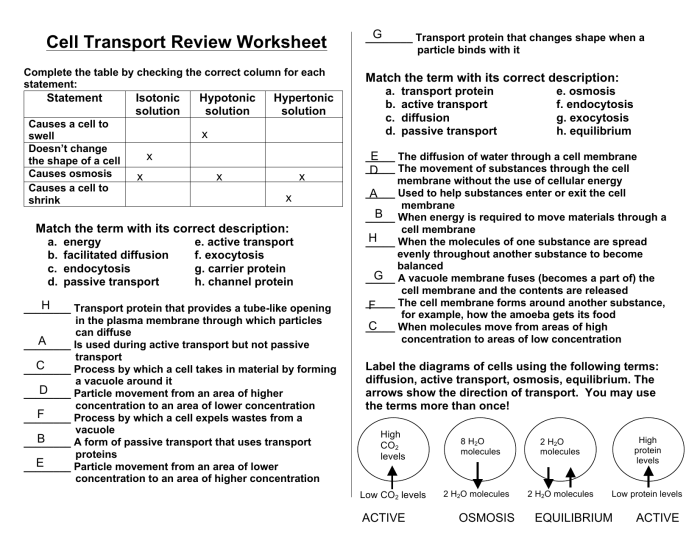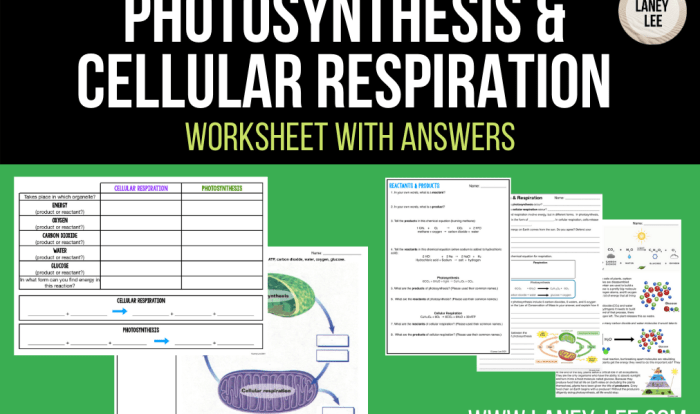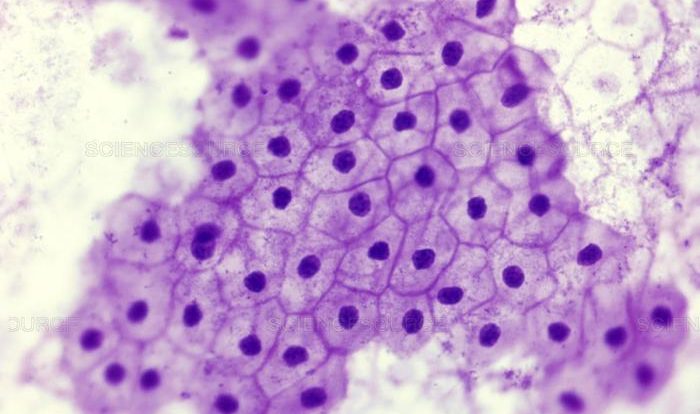Cell membrane transport worksheet answers – Welcome to the realm of cell membrane transport, where the intricate dance of molecules across the cellular barrier unfolds. Dive into our comprehensive worksheet answers and unravel the mysteries of passive and active transport, facilitated diffusion, and the factors that govern membrane permeability.
Prepare to witness the vital role of membrane transport in cellular functions, from maintaining homeostasis to facilitating cell signaling.
Cell Membrane Transport Mechanisms: Cell Membrane Transport Worksheet Answers

Cell membrane transport refers to the movement of substances across the cell membrane, which is a selectively permeable barrier. Different mechanisms facilitate the transport of various molecules and ions across this barrier, ensuring the maintenance of cellular homeostasis and proper functioning.
Types of Cell Membrane Transport Mechanisms
- Passive Transport:Movement of substances across the cell membrane without the need for energy input. It occurs down a concentration gradient, from an area of high concentration to an area of low concentration. Types of passive transport include:
- Simple diffusion: Movement of small, nonpolar molecules directly through the phospholipid bilayer.
- Facilitated diffusion: Movement of polar molecules or ions across the membrane with the assistance of membrane proteins called channels or carriers.
- Osmosis: Movement of water across a semipermeable membrane from an area of high water concentration to an area of low water concentration.
- Active Transport:Movement of substances across the cell membrane against a concentration gradient, requiring energy input. Active transport proteins, such as pumps and exchangers, utilize ATP to transport molecules and ions.
Factors Affecting Membrane Transport
- Concentration Gradient:The difference in concentration of a substance between two compartments drives passive transport. A higher concentration gradient results in a faster rate of transport.
- Temperature:Temperature affects the kinetic energy of molecules, influencing the rate of diffusion. Higher temperatures increase molecular movement and thus increase the rate of transport.
- Surface Area:The larger the surface area of the cell membrane, the more transport proteins are available for facilitated diffusion and active transport, leading to a higher rate of transport.
- Equilibrium:When the concentration of a substance is equal on both sides of the membrane, net transport ceases, and equilibrium is reached.
Importance of Membrane Transport, Cell membrane transport worksheet answers
- Cellular Homeostasis:Membrane transport regulates the movement of ions and nutrients across the cell membrane, maintaining the proper balance of solutes and water within the cell.
- Nutrient Uptake:Cells rely on membrane transport to acquire essential nutrients, such as glucose and amino acids, from the extracellular environment.
- Waste Removal:Cells utilize membrane transport to expel waste products, such as carbon dioxide and urea, from the cytoplasm.
- Cell Signaling and Communication:Membrane transport plays a crucial role in cell signaling and communication. Ligands bind to specific membrane receptors, triggering a cascade of events that lead to changes in cellular activity.
Regulation of Membrane Transport
- Ion Channels:Ion channels are membrane proteins that form pores, allowing the passage of specific ions across the cell membrane. They are often gated, meaning they can be opened or closed in response to specific stimuli.
- Pumps:Pumps are membrane proteins that utilize ATP to transport substances across the cell membrane against a concentration gradient. Examples include the sodium-potassium pump and the calcium pump.
- Exchangers:Exchangers are membrane proteins that facilitate the exchange of ions across the cell membrane. For example, the sodium-calcium exchanger exchanges sodium ions for calcium ions.
- Hormones and Signaling Molecules:Hormones and other signaling molecules can regulate membrane transport by binding to receptors on the cell surface and triggering changes in the activity of membrane transport proteins.
Query Resolution
What is the primary function of cell membrane transport?
Cell membrane transport facilitates the movement of essential substances across the cell membrane, ensuring the exchange of nutrients, waste products, and signaling molecules, which is vital for maintaining cellular homeostasis and function.
Explain the concept of facilitated diffusion.
Facilitated diffusion involves the movement of molecules across the cell membrane with the assistance of membrane proteins. These proteins act as channels or carriers, enabling the passage of specific molecules down their concentration gradient without the need for energy input.
How does active transport differ from passive transport?
Active transport requires energy input to move molecules across the cell membrane against their concentration gradient. This process is mediated by membrane proteins that utilize ATP hydrolysis to pump substances uphill, enabling cells to accumulate essential molecules or expel waste products.


